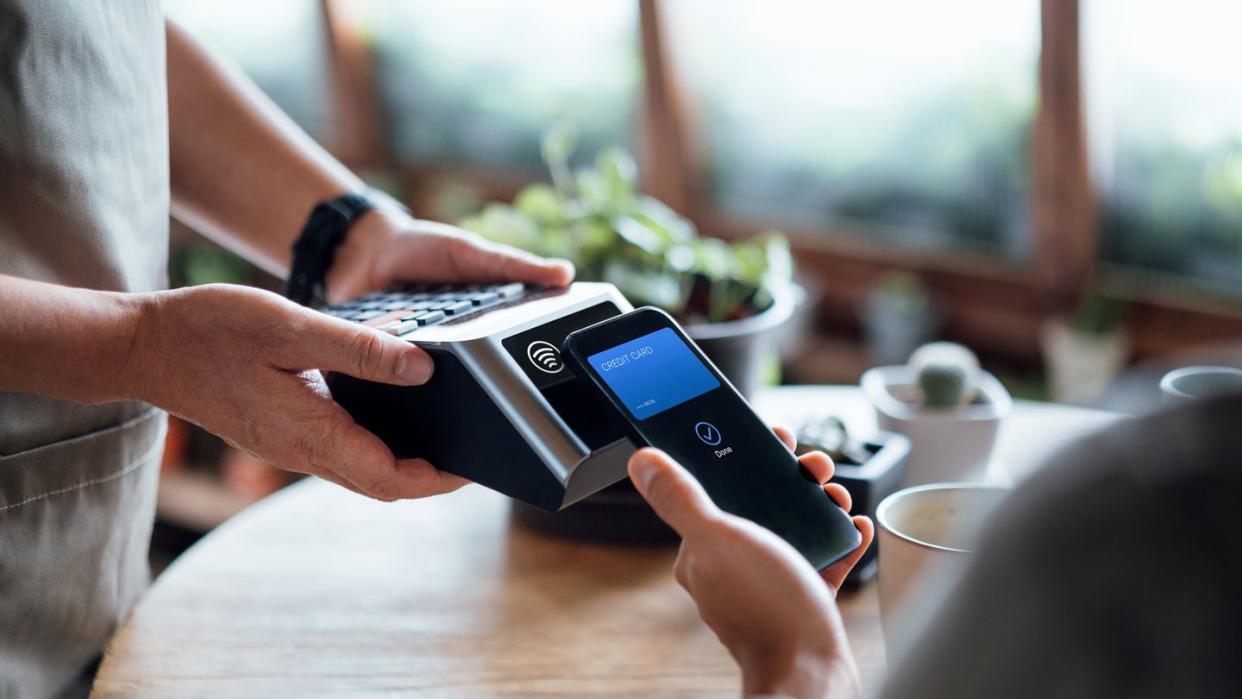Why Is Tipping Culture so Confusing? We Asked Financial Experts to Explain Tipflation

Even as inflation falls, tipflation doesn't seem to be going anywhere. For many, the practice of tipping has shifted from a gesture of appreciation to one of confusion. New customs and technological changes over the last few years have disrupted the norms and made giving a gratuity feel like a weightier decision than it used to be.
If you find yourself struggling to know who to tip, how much, and how often, you're experiencing the economic state known as tipflation. We talked to financial experts on what tipflation is, what's causing it, and how to navigate the new frontier of tipping etiquette.
Why are people now so confused about tipping?
According to the Pew Research Center, 72% of U.S. adults say tipping is expected in more places today than it was five years ago. But as Americans feel obligated to tip more often, only about one-third of us have the confidence to determine when and how much to tip for different types of services.
“Tipping norms are created through collective behavior, and what most people tend to do ends up setting the standard for others,” says Jonathan Merry, finance expert at Moneyzine.
Whenever prices increase — whether due to inflation or hidden surcharges — there is often a feeling of sticker shock when it comes time to pay a bill. And it can be difficult to determine in these situations how much a fair gratuity really is.
What is the cause of tipflation?
“There's an increasing recognition of the disparity between wages and living costs, particularly for those in the hospitality industry, leading consumers to tip more voluntarily,” says CPA and founder of the The William Stanley Group, Michelle Delker. “Societal pressures and expectations add to this, creating what could be perceived as a social guilt dynamic,” she adds.
The pandemic was also a contributing factor. “During the pandemic, many people started tipping generously, even when it was hard for them financially,” says Merry. This helped to sustain employees and keep restaurants open at the time. But even as lockdown-era restrictions have ceased, many of the service charges and tip expectations from that time have endured.
Tipflation is further driven by low wages for workers. “Many service workers rely on tips to supplement their low pay, leading to a perception that higher tips are necessary to ensure fair compensation,” says David Reyes, founder of Reyes Financial Architecture. “Businesses have embraced tipflation by introducing preset tipping options and encouraging customers to tip more generously,” adds Reyes.
What is tip creep?
The industry shift to digital point-of-sale systems (such as Toast or Square) and app-based service platforms (like Uber or Grubhub) could also be considered a contributing factor to tipflation. Typically, at the end of a transaction on these systems, they automatically display a range of tip percentages, regardless of whether the service provided warrants a tip — this phenomenon is called tip creep.
“The way these digital screens prompt for tips feels more coerced than the laidback approach of a cash tip jar sitting on the counter,” says Merry. “These systems overwhelm customers with the frequency at which they're asked to consider tipping, creating a sense of pressure regarding whether to tip and how much to give,” he adds.
Even if you wanted to leave a specific dollar amount in the digital tip jar, many of these systems make giving a custom amount frustrating and circuitous. “This, combined with the social discomfort of appearing cheap or unappreciative in front of staff, can push consumers to opt for higher, preset tipping rates,” says Delker.
Not that long ago, leaving no tip was the default option. Now, digital payment systems force you to opt out. “According to behavioral economics, people prefer not to make financial decisions, and these payment systems compel users to make decisions they don't want to,” says Ryan Graves, CFA and president of Bemiston Asset Management.
What are the current tipping standards?
While the rules of tipping may still be flexible and situation-dependent, there are a few standards that make the decision of how much to leave a little easier.
“The three groups of people you should tip are those who help with your dependents, those who provide personal services, and the people who help maintain your home,” advises president and owner of Mannersmith Etiquette Consulting, Jodi RR Smith. “For quick service or counter service, 10% is the guideline. For meals and personal care/grooming, 20% is the standard.”
If you have a long-standing relationship with someone who provides a regular service for you, it can be a kind gesture to give them a holiday tip. This signifies that you appreciate their work and look forward to continuing business with them in the year ahead. “Tip anyone who helps you year-round the cost of one session,” says Smith. “If you pay your dog walker $50 per week, then the year-end tip would be $50.” For people whose services you use less often, tip them less.
“It’s also important to know who not to tip,” advises Smith. Certain professions are not allowed to accept cash tips, such as mail carriers, police, and fire personnel — and sometimes garbage collectors or teachers. You can show your appreciation to them by writing a thank-you card instead.
“Developing a personal tipping strategy should ultimately take into account local customs, service quality, employee’s reliance on tips, and personal financial considerations,” says Delker. It’s always your choice to determine the amount you feel is appropriate. And, if you’re ever unsure who or how much to tip, it’s perfectly OK to ask the potential recipient what range they recommend.
You Might Also Like

